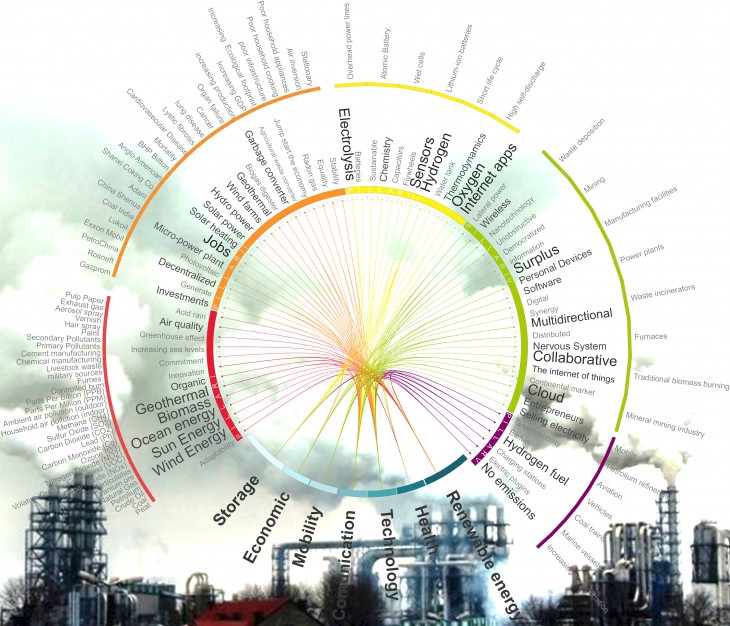You could go days without food and hours without water, but you would last only a few minutes without air.
Cities, along with the heavy industries and fossil-fueled power stations are responsible for ¾ of the total anthropogenic contribution to greenhouse gases. It is more than clear that the fuels and energies we use have put us at an end game that is irreversible.
Particles
Jeremy Rifkin shares an impressive and timely vision of humanity living harmoniously within the biosphere of Earth through an integrated network of communication and sustainable, locally-produced energy.
He argues that the tremendous wave of social networking on the Internet represents a tectonic shift in human communication and suddenly we find ourselves intimately connected with millions of people.In addition to the phenomenon of social networking, the past decade has seen an unprecedented shift in the way data and information is made available and disseminated. Ideas spread as quick as light, and are freely shared and propagated.
So according to Rifkin, the revolution in communication goes hand-in-hand with a revolution in energy production.
The “first” industrial revolution occurred with a synergy of knowledge made widely available through the printing press and the advent of steam power and the “second” industrial revolution occurred when long-distance communication, such as the telegram and radio, coincided with the breakthroughs in oil and the combustion engine.
So what is the energy source that is inseparable from the revolution in online communication?
It is a network of locally-produced ecologically-sustainable energy, connected through a global peer-to-peer network. For example, individual houses and businesses could produce their own power and share it on a grid that connects the regional to the national and eventually on a global scale.
We have witnessed a remarkable shift in the way humans interface with each other, and the ways in which we can sustain our existence. This shift, according to Rifkin, will deeply change the way we connect with the Earth itself.
“Today, we are on the cusp of another historic convergence of energy and communication–a third industrial revolution–that could extend empathic sensibility to the biosphere itself and all of life on Earth. The distributed Internet revolution is coming together with distributed renewable energies, making possible a sustainable, post-carbon economy that is both globally connected and locally managed.”
Jeremy Rifkin has divided the concept of the 3rd industrial revolution into 5 pillars.
These pillars are powered by multiple inputs that have accumulated through the anthopocene epoch of the carbon era along with sustainable development and ever evolving communication to ultimately introduce new outputs that are dedicated to biosphere consciousness.

